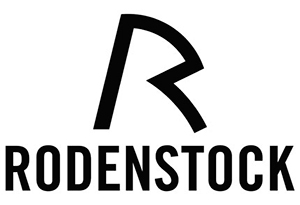Since Rodenstock introduced Individual Lens Technology (ILT) to the market in 2000 and the first individual Impression progressive lenses arrived on the market, individual lenses have gained importance worldwide.


Eye Lens Technology
Now Rodenstock is setting new standards once again: Individual Lens Technology becomes Eye Lens Technology (EyeLT).
With the optimisation of lenses the Individual Lens Technology takes into consideration the individual parameters, the Perfect Balance Principle, the free design of lenses (visual habits) and the Unique Customisation. Now ILT becomes EyeLT and Rodenstock adds the EyeModel to the Impression lenses. The EyeModel not only considers the individual parameters but also the physiological and geometric/optical influences on near vision, in accordance with Listing’s Law for near vision and effective near astigmatism.
Backgrounds
With progressive lenses, until now it has only been possible to change the spherical value for near vision in the form of the addition power. The cylinder value and the cylinder axis were adopted from the far refraction, since nothing else could be implemented from a technical perspective.
However, with Eye Lens Technology, Rodenstock has been able to master this technical challenge. It is now possible to realise a near refraction in a progressive lens that is independent of the far refraction.
There are a variety of causes of near astigmatism3,4,5,6,7,8,9,10.
On the one hand, there are physiological reasons. There is a rotation of the eyes (rolling) during eye movements. Due to this rotation, there are different cylinder axes that have to be implemented in the lens depending on the line of vision. This is described in Listing’s Law11,12,13.
Another cause – purely of a geometric/optical nature – is the so-called effective near astigmatism. This requires a different cylinder value for near vision than for far vision. And finally, there are individual anatomic causes that can lead to near astigmatism due to asymmetrical accommodation, for example due to tilting of the eye lens. These interrelationships and their effects are described in detail in technical literature3,4,5,6,7,8,9,10.
Until now, however, it was assumed that there was no way to correct this near astigmatism in a progressive lens3,4,5,6,7.
The fact that differences in the cylindrical correction between far vision and near vision could not be corrected belongs to the past now thanks to the EyeModel. Rodenstock, with its core competence in optimising and manufacturing individual lenses, is now able to calculate and manufacture such progressive lenses for the first time.
EyeModel: Listing’s Law and Effective Near Astigmatism
During optimisation of individual progressive lenses, the EyeModel takes into consideration the natural eye movements for far vision and near vision. Now, besides Listing’s Law for far vision14,15,16, which has already been taken into consideration since the year 2000, there is also an implementation of Listing’s Law for near vision11,12,13. Hence, together with effective near astigmatism, the EyeModel opens up a new dimension for taking care of the visually impaired who have astigmatism, and that means better vision for more than 80% of the customers!
Listing’s Law


Listing’s Law for far vision describes the rotation of the eyes for eye movements (versions) in the same direction for far vision (Figure 1). Since the eyes perform slight rolling movements during peripheral eye movements, there is a necessity for flexible cylinder axes that are matched to the rolling movements of the eye.
Figure 2: Near vision – rolling of the eyes with eye movements in the opposite direction according to Listing’s Law for far vision. A horizontal line in space is not reproduced on corresponding retina positions.
However, for near vision, there are eye movements in the opposite direction (vergences).
Therefore, the description of the rolling movements according to Listing’s Law for far vision is not applicable to near vision (Figure 2). So far, there has not been a correct physiological description for the case involving vergences.
However, respective models have been developed in the past few years in physiological research11,12,13. Accordingly, both eyes try to reproduce a horizontal line in space on the corresponding retina positions. In order to guarantee this, the eyes must inevitably roll differently for convergence than for far vision (Figure 3).


The cylinder axis calculated according to Listing’s Law is dependent on the line of vision and the convergence, which in turn is a function of the object distance, interpupillary distance, cylinder, vertex distance, and eye movement. Here, in contrast to Listing’s Law for far vision, it applies that the cylinder axis change becomes greater as:
- the object distance becomes smaller
- the eye movements become greater
- the interpupillary distance becomes greater.
Rodenstock has now transferred these findings to the lens and for the first time adjusted the cylinder axis of the lens exactly to the actual eye movements in near vision (Figure 4).


Top: without Listing
Middle: with Listing far vision
Bottom: with Listing far and near vision
(view through left lens, cylinder axis 0°)
The red lines in Figure 4 show the areas of the lens in which the eyes roll during eye movements. The axis of the cylinder is adjusted here compared to the ordered cylinder axis according to Listing’s Law for far and near vision. The result means perfect intermediate and near zones, i.e. the visual acuity increases for near vision and the fields of view become larger.
Effective Near Astigmatism
Besides taking Listing’s Law for far and near vision into consideration, Rodenstock was also able to integrate an additional new feature into the high-end progressive lenses – correction of effective near astigmatism3,4,5,6,7. Effective near astigmatism means that a cylindrical lens which has been optimised for far vision is not perfect for near vision (Figure 5).


In near vision, the shape of the wave front changes compared to far vision due to the distance between lens and eye. The consequence of this is that a higher powered cylinder is required to correct near vision astigmatism. Therefore, effective near astigmatism is purely a geometric-optical effect that arises simply because of the distance between the lens and the eye and the object distance.
The effective near astigmatism becomes greater as:
- the effect of the cylinder increases
- the distance to the object decreases
- the addition power decreases
- the vertex distance increases.
Effective near astigmatism affects the value of the cylindrical correction. If it is taken into consideration in the lens, then near objects also become a sharp point image on the retina (Figure 6).


Besides improved visual acuity, the customer also profits from a larger near vision field of view.
Benefits for Spectacle Wearers
The improved performance of the progressive lenses is referred to as the EyeModel Effect, and can be seen based on the following example:
Impression®
- Refraction values (= ordered values)
- Far vision: SPH 0.25 CYL 3.50 AXIS 5 ADD 1.50
- Lens values
- Far vision: SPH 0.25 CYL 3.50 AXIS 5 Visual acuity 1.0
- Near vision: SPH 1.75 CYL 3.50 AXIS 5 Visual acuity 0.9
While the respective lens values (practical values) lead to optimum visual acuity of 1.0 for far vision, the astigmatic error caused by effective near astigmatism and Listing’s Law in near vision result in a reduction of visual acuity in near vision. This leads to restricted fields of view in the intermediate range and especially in near vision, and ultimately to a performance reduction17 (Figure 7).
Figure 7: Fields of view sizes without EyeModel: Here, the cylinder value due to the effective near astigmatism and the cylinder axis due to Listing’s Law for near vision are not corrected.
If the EyeModel is now taken into consideration, then the practical values of the lens remain unchanged for far vision, while the practical values for near vision are adjusted for the EyeModel Effect.
Impression® EyeLT
- Refraction values = ordered values
- Far vision: SPH 0.25 CYL 3.50 AXIS 5 ADD 1.50
- Lens values
- Far vision: SPH 0.25 CYL 3.50 AXIS 5 Visual acuity 1.0
- Near vision: SPH 1.69 CYL 3.61 AXIS 8 Visual acuity 1.0
Because of taking Listing’s Law and effective near astigmatism into consideration, the spectacle wearer receives better correction in the near range. The EyeModel Effect provides an increase performance17 of the lens of up to 25% for the customer. In this way, the customer profits from perfect vision at all distances (Figure 8).


No additional measurements are necessary for improved near vision. This means the optician determines the refraction values for far vision and the addition power as usual. Rodenstock then calculates the respective new cylindrical effect (effective near astigmatism) including the cylinder axis (Listing’s Law for near vision) for near vision.
The effective near astigmatism can lead to a difference of up to 0.5 D between the far and near cylinder. In addition, the natural rolling of the eyes causes a cylinder axis change of up to 7° for near vision. Hence, an overall astigmatic error (EyeModel Effect) of more than 1.0 D can arise, which would reduce visual acuity in near vision by half. Since approx. 80% of all orders involve cylindrical lenses, the majority of all progressive lens wearers will profit from the EyeModel. The following chart (Figure 9) shows the EyeModel Effect as a function of the addition and cylinder. It shows that the EyeModel Effect decreases up to an addition of 2.50 D, because the effect of effective near astigmatism becomes less as the addition increases, while the cylinder axis error remains almost constant due to the same convergence and unchanged object distance. Above an addition power of 2,50 Dit increases due tothe shorter object distance and the greater cylinder axis error resulting from this.
Figure 9: EyeModel Effect (total astigmatic error) as a function of the prescribed cylindrical power in far vision and the addition.
Figure 10 shows the EyeModel Effect as a function of the object distance and cylinder. Here, it can be seen that for near objects and a high cylinder, the overall astigmatic error can be considerably higher than 1.0 D. This error is eliminated in all Eye Lens Technology lenses.
Figure 10: EyeModel Effect as a function of the prescribed cylindrical power in far vision and the object distance.
Summary
Because of the Eye Lens Technology, the individual product portfolio of Rodenstock, consisting of Impression® Mono Aveo, Impression FreeSign®, Impression®, Impression® FashionCurved, Impression Ergo FS® and Impression Ergo®, has provided better vision in the intermediate range and especially in near vision since March 2011.
This has also been proven by our internal studies in which test persons rated vision with Eye Lens Technology lenses as very good. Through the EyeModel, it is possible for spectacle wearers to have considerably better and more comfortable near vision.
References 1. G. Esser, W. Becken, W. Müller, D. Uttenweiler, “Impression FreeSign”, DOZ 7 (2007) 2. I. Schwarz, M. Zimmermann, “Mehr Nähe erleben – Designtuning für Nahkomfortgläser“, DOZ 4 (2009) 3. J. Tischer, “Die Praxis der Augenglasbestimmung“ , Pg. 128-130 (2006). 4. H. Diepes, “Refraktionsbestimmung,“ Pg. 396-398 (2004). 5. H. Presser, “Brille und Auge“, Pg. 74,75,116,196,216 (2001). 6. Methling, “Bestimmen von Sehhilfen“ Pg.117 (1996). 7. D. Kalder, „Gleitsichtgläser“, S. 168, WVAO-Bibliothek Band 16 Mainz (2003) 8. M. Jalie, “The Principles of Ophthalmic Lenses,” p. 331 -345, The Association of Dispensing Opticians (1977). 9. A. H. Tunnacliffe, “Introduction to Visual Optics,” p. 116-117, ABDO College of Education (1993). 10. Bennett & Rabbetts`, “Clinical Visual Optics,” p. 134- 136, Butterworth-Heinemann (2007). 11. A. M. F. Wong, “Listing’s Law: Clinical Significance and Implications for Neural Control,” Survey of Ophthalmology 49. 563-575 (2004). 12. C. M. Schor, “Neuromuscular Plasticity and Rehabilitation of the Ocular Near Response,” Optom. Vis. Sci. 86: 788-802 (2009). 13. M. S. Banks, I. T.C. Hooge, B. T. Backus, “Perceiving slant about a horizontal axis from stereopsis,” J. Vision 1. 55-79 (2001). 14. R. Dorsch, F. Seve, H. Altheimer, P. Baumbach, “The significance of Listing´s Law on the design of spectacle lenses,” Vision and its Applications, OSA Technical Digest (Optical Society of America, 2000), paper MB2 15. L. Ferman, H. Collewijn, AV van den Berg, “A direct test of Listing´s law I. Human ocular torsion measured in static tertiary positions,” Vision Res. 27(6):929-38 (1987) 16. L. Ferman, H. Collewijn, AV van den Berg, “A direct test of Listing´s law II. Human ocular torsion measured under dynamic conditions,” Vision Res. 27(6):939-51 (1987) 17. G. Esser, D. Uttenweiler, “Die Performance individueller Gleitsichtgläser,” DOZ 12 (2005) Authors: Nicke, Katrin, Dipl. – Augenoptikerin / Optometristin (FH) Welk, Andrea, Dipl.-Ing. (FH) Schwarz, Ilka, Dipl.-Ing. (FH) Esser, Gregor, M.Sc., Dipl.-Ing. (FH) Research & Development Rodenstock GmbH Isartalstr. 43, 80469 Munich Email: info@rodenstock.de Internet: www.rodenstock.com















